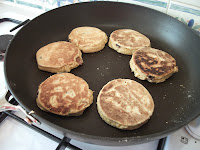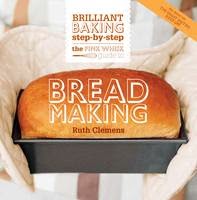 |
| Bananas defrosting from the freezer |
A short posting today as I am preparing for this evening’s
Clandestine Cake Club event ‘Use your loaf’, i.e. all cakes must be baked using
a loaf tin and, with no suggested flavours this time, it’s all about the shape!
Whilst trawling my old recipes a fortnight ago, I came
across an old favourite which is a Banana and Spice Loaf - ideal for tonight’s
theme - and, as I had about 20 bananas in the freezer ready to be used in
baking (a perfect place to store
over-ripe examples that are left in the fruit bowl), I didn’t have to buy
too many ingredients.
The recipe is as follows, easy as chips, and a real winner
for those that like warm, dark, sweet and fruity flavours together with a
sumptuous chocolate ganache topping - you can’t go wrong!
 |
| Banana and spice loaf |
For cake:
100g raisins
50ml brandy
(if preferred use orange juice)
185g plain
flour
2 tsp baking
powder
½ teaspoon
bicarbonate of soda
Pinch of
salt
2 tsp
cinnamon
125g
unsalted butter (I used soft marg)
150g soft
light brown sugar
2 large eggs
4 small very
ripe bananas (defrosted if frozen – cut off tops and squeeze out flesh from
skin)
1 tsp
vanilla extract
For topping:
90 ml or 3fl
oz double cream
20g unsalted
butter
100 grams
dark chocolate, grated
Edible gold
glitter to dust (optional)
1. In a small pan pour the brandy (or orange juice)
over the raisins and bring to the boil. Remove from the heat and leave to cool
and soak (I prepare this the night before baking).
2. Preheat the oven to 170C/150C fan/Gas 3. Sieve
together flour, baking powder, bicarb, salt and cinnamon in a large bowl.
3. In a separate bowl mix the butter and sugar and
beat until light and fluffy. Beat in the eggs a little at a time, beating well
after each addition. Then stir through the mashed banana, soaked raisins and
vanilla extract.
4. Fold in the flour and place mixture into a 900g
(2lb) loaf tin. Bake for 1 – 1 ¼ hrs – or until a skewer comes out clean. Leave
to cool on a wire rack.
5. To make the topping, heat the cream and butter
in a small saucepan to just boiling then take off the heat. Add the grated
chocolate and leave for a couple of minutes to melt before gently stirring into
the cream. Leave to cool and thicken slightly before pouring over the cooled
cake. Sprinkle with edible gold glitter (if using).
.jpg)
.jpg)



.jpg)
.jpg)


.jpg)


.jpg)
.jpg)


.jpg)

.jpg)
.jpg)

.jpg)
.jpg)
.jpg)
.jpg)
.jpg)

.jpg)
.jpg)
.jpg)

.jpg)
.jpg)
.jpg)
.jpg)
.jpg)
















